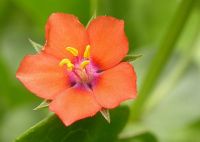Floral formula

A floral formula is like a secret code that tells us what a flower looks like and how it is put together. Imagine you are playing a game where you have to draw a flower without looking at it. The floral formula helps you know what the flower should look like, so you don't have to guess.
The floral formula is made up of different symbols and letters that represent different parts of the flower. For example, a "P" stands for petals, and a "S" stands for the sepals (those little green leaves that protect the flower bud). The number next to each symbol tells us how many there are.
So, if we see a formula that says P5, it means there are 5 petals. If it says S2, it means there are 2 sepals.
But it's not just about the petals and sepals. The formula also tells us about the way the flower is arranged. For example, if there are 5 petals, they might be arranged in a circle around the center of the flower. This is represented by a circle symbol in the formula.
The formula also tells us about the male and female parts of the flower. The male part is called the stamen, and it makes pollen. The female part is called the pistil, and it makes seeds. The formula tells us how many of each there are, and how they are arranged.
With all this information, we can use the floral formula to draw a picture of the flower in our minds, even if we've never seen it before. It's like having a secret decoder ring for flowers!
The floral formula is made up of different symbols and letters that represent different parts of the flower. For example, a "P" stands for petals, and a "S" stands for the sepals (those little green leaves that protect the flower bud). The number next to each symbol tells us how many there are.
So, if we see a formula that says P5, it means there are 5 petals. If it says S2, it means there are 2 sepals.
But it's not just about the petals and sepals. The formula also tells us about the way the flower is arranged. For example, if there are 5 petals, they might be arranged in a circle around the center of the flower. This is represented by a circle symbol in the formula.
The formula also tells us about the male and female parts of the flower. The male part is called the stamen, and it makes pollen. The female part is called the pistil, and it makes seeds. The formula tells us how many of each there are, and how they are arranged.
With all this information, we can use the floral formula to draw a picture of the flower in our minds, even if we've never seen it before. It's like having a secret decoder ring for flowers!
Related topics others have asked about:
